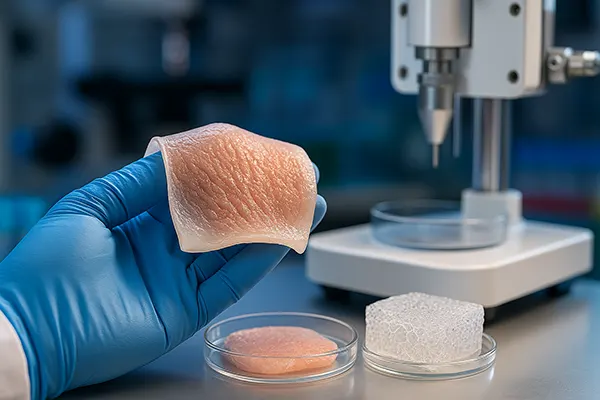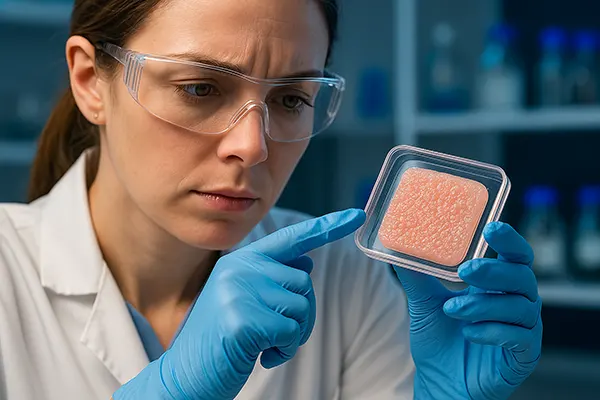Living Materials: The Rise of Self-Healing Bioengineered Tissues

Imagine materials that can repair themselves just like human skin or regenerate the way our muscles do after injury. In 2025, this idea is no longer just science fiction. Thanks to rapid developments in synthetic biology and tissue engineering, self-healing materials are now being integrated into real-world applications, from medicine to architecture. These living materials are not only revolutionary but also sustainable, adaptive, and built to last.
Breakthroughs in Bioengineering and Synthetic Biology
Over the last decade, scientists have harnessed the tools of synthetic biology to reprogram cells and tissues. In 2025, the fusion of CRISPR gene editing, 3D bioprinting, and smart hydrogels is enabling researchers to create materials that mimic or even exceed the regenerative abilities of living organisms. Institutions such as MIT, ETH Zurich, and the Wyss Institute at Harvard are leading this revolution.
One of the most notable examples is the development of self-healing skin grafts that close minor wounds autonomously. These grafts use genetically modified fibroblasts embedded in scaffolds that detect damage and stimulate tissue regrowth. Such innovations are already undergoing clinical trials in the US and EU.
Beyond skin, bioengineers are also crafting muscle tissues that contract on demand and bone matrices that calcify themselves when fractured. These advances hold particular promise for regenerative medicine, especially in treating chronic wounds, burns, and degenerative conditions.
Programmable Cells and Living Scaffolds
Central to this innovation are programmable cells—engineered using CRISPR/Cas9—to sense environmental cues and respond accordingly. For instance, bacteria like E. coli and Bacillus subtilis have been engineered to secrete repair enzymes when mechanical stress is detected in materials.
Living scaffolds, made from a combination of alginate, collagen, and biocompatible polymers, support the growth and communication of these cells. These scaffolds are essential for maintaining cell function, structure, and the ability to regenerate on command.
Recent breakthroughs have seen biohybrid materials used in wearable electronics and soft robotics, capable of healing microtears without external intervention. This ensures longer durability and resilience for devices used in harsh conditions.
Applications Across Industries: From Medicine to Construction
The medical sector remains the primary driver of self-healing materials, particularly in prosthetics, skin grafts, and organ regeneration. However, their use is expanding rapidly into other industries. In 2025, the construction sector has begun experimenting with bioengineered concrete, which uses living microbes to repair cracks automatically.
In aerospace, NASA-funded research is working on integrating self-repairing materials into spacecraft to manage micro-meteoroid damage. These materials rely on embedded bacterial spores that become active upon exposure to vacuum or extreme temperature shifts.
Fashion and wearable tech are also adopting living materials. Companies like Modern Meadow and Bolt Threads are developing self-repairing fabrics derived from yeast and spider silk proteins, reducing textile waste and increasing product longevity.
Military and Environmental Uses
The military has shown interest in self-healing camouflage and equipment that can autonomously recover from damage. DARPA-backed projects are experimenting with living materials that regenerate under specific light or thermal conditions.
Environmental applications include pollution-absorbing bricks and self-cleaning surfaces made from bioengineered fungi and algae. These not only restore themselves but actively purify air and water, turning urban infrastructure into living systems.
In agriculture, researchers are developing biodegradable plant wraps embedded with living organisms to monitor and improve soil health, helping crops grow more sustainably while the material degrades naturally.

Ethical Considerations and Future Outlook
While the potential of self-healing materials is immense, ethical considerations must be addressed. What happens when a living material evolves in an unintended way? Or when synthetic organisms escape controlled environments? These concerns are prompting tighter biosafety regulations globally.
In 2025, the European Union’s updated bioengineering guidelines mandate thorough risk assessments for any living product released into open ecosystems. The US FDA and EPA also require new certification processes for self-healing medical devices and construction materials using living organisms.
Despite challenges, the field continues to grow. The integration of AI and machine learning is improving the predictability and control of engineered behaviours in living tissues. Researchers believe that by 2030, living materials will become standard in architecture, clothing, and personalised medicine.
Public Perception and Responsible Development
Public acceptance is still mixed. While many embrace the sustainability and efficiency of bioengineered materials, concerns about synthetic life and biosecurity persist. Transparent communication and public engagement are essential.
Universities and research centres now hold regular open labs and public demos to showcase how these materials work and the safeguards in place. This effort is gradually building trust and demystifying biotechnology.
Responsible development, coupled with global collaboration, will be key to ensuring these materials enhance rather than endanger our environments and bodies. As 2025 unfolds, living materials are poised to reshape industries, if guided by science, ethics, and shared responsibility.


